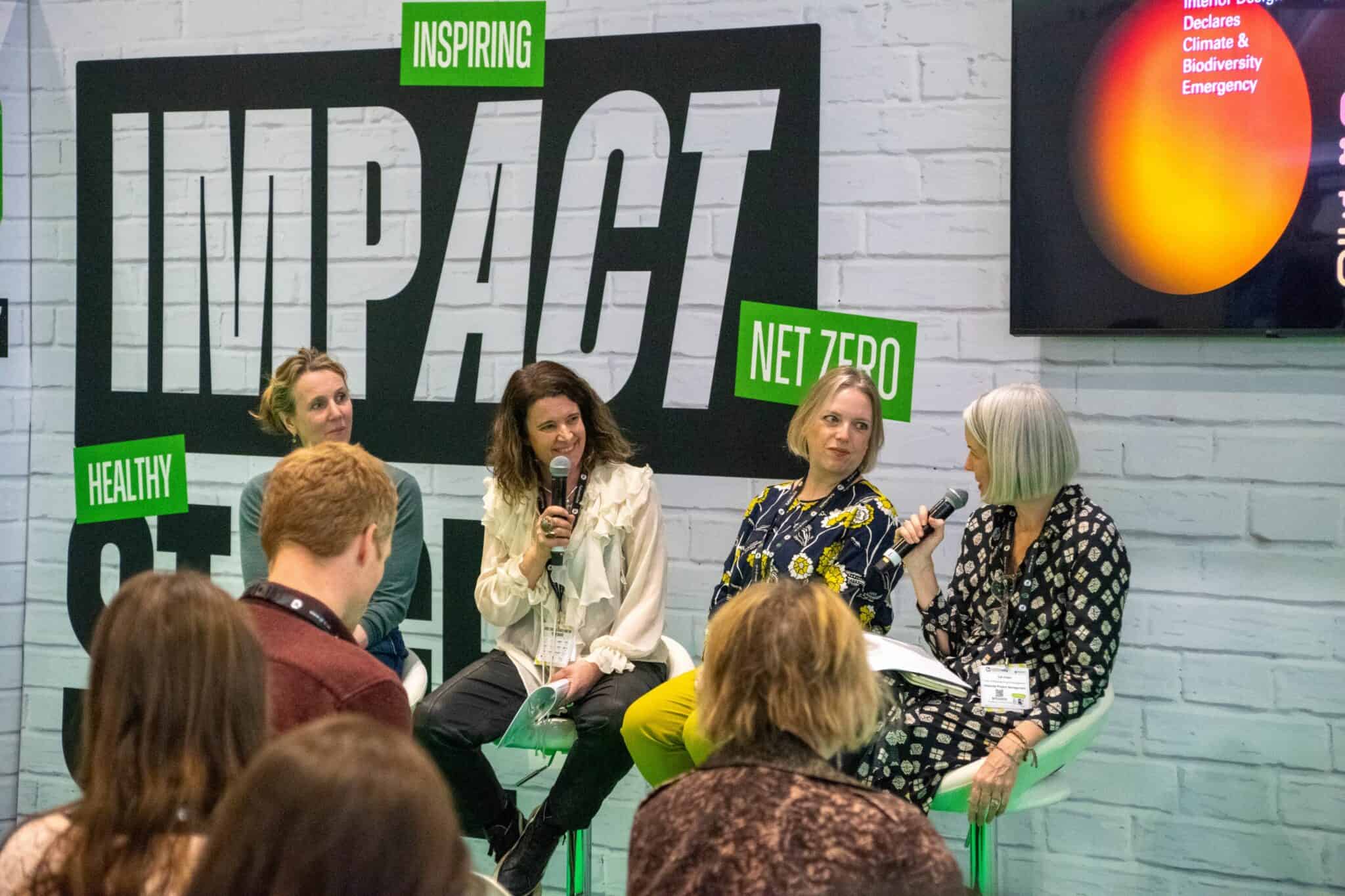Futurebuild Talk 2025

At Futurebuild 2025, representing Interior Design Declares – UK alongside fellow steering group members Delyth Fetherston Dilke, and Nicola Holden with Cat Head expertly moderating, co-founder Helen Gordon explored the themes of consumption, health, and wellbeing in interiors.
What stood out most from the discussions and audience questions was the widespread disconnect—many people still don’t fully realize how their consumption habits directly impact not only their own health and wellbeing but also that of others and the planet.
The story we have been living by was shaped 100 or so years ago, during the Industrial Revolution—a story built on linear, mechanistic systems that prioritise profit and relentless growth. It’s a model that promotes self-interest and instant gratification, driving us to buy without considering the deeper story of how, why, and where something was made.
As designers, we have a responsibility to re-educate, guide, and lead the way toward a better future.
So what if we create a new story—one of possibility? A story where we inspire clients and communities to reconnect, not just with the natural world around them but also with themselves, to deeply understand their role in shaping a more regenerative future.
Jon Alexander, in his book “Citizens”, speaks of shifting from a consumer-driven mindset to a citizen-led one—where we move beyond passive consumption to actively participate, share wisdom, and co-create solutions. In a recent conversation with Brian Eno, he put it perfectly:
“I don’t see the point in talking about capitalism or post-capitalism, growth or de-growth, in all honesty. I believe it’s about choosing to orient to the world as citizens, not accepting the roles of consumer or subject. If we do that, we’ll look around and find ourselves in a different ‘-ism’ before we know it.”
So how do we make this shift?
– Moving away from a throwaway, mechanistic mindset—where impulse drives consumption—towards a more intentional and caring approach.
– Choosing well-made, repurposable, legacy products designed with longevity in mind.
– Shifting from globalized, mass-market supply chains to localized, craft-driven economies that value transparency, sustainability, and materials free from toxins.
– Embracing collaboration, showing through real-world projects what is possible when we design with care, purpose, and a regenerative mindset.
– We need more makers, not just consumers. More people who see their role as active participants in shaping a world where places, people, and the planet can truly flourish.
So, what’s your new story? How will you help enable a healthier, more connected future?